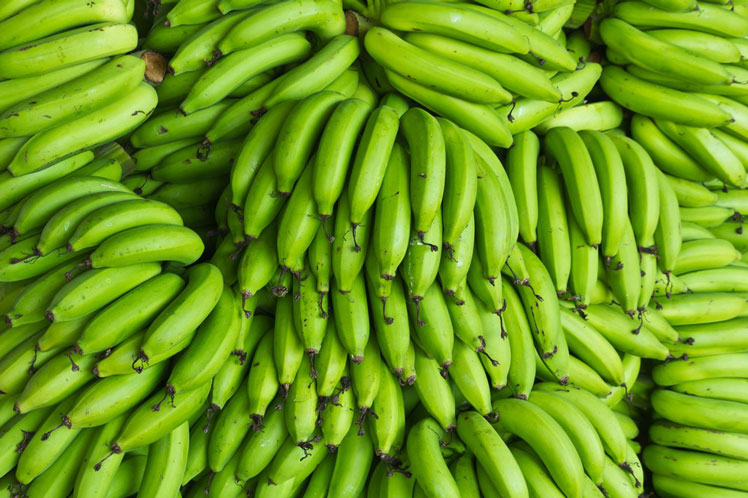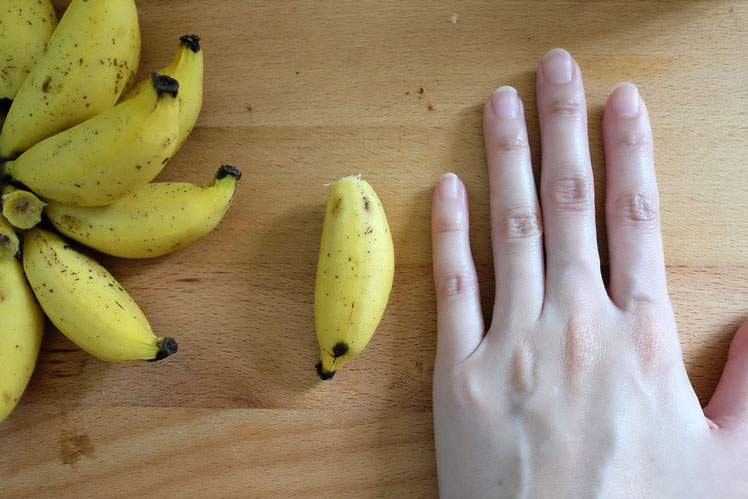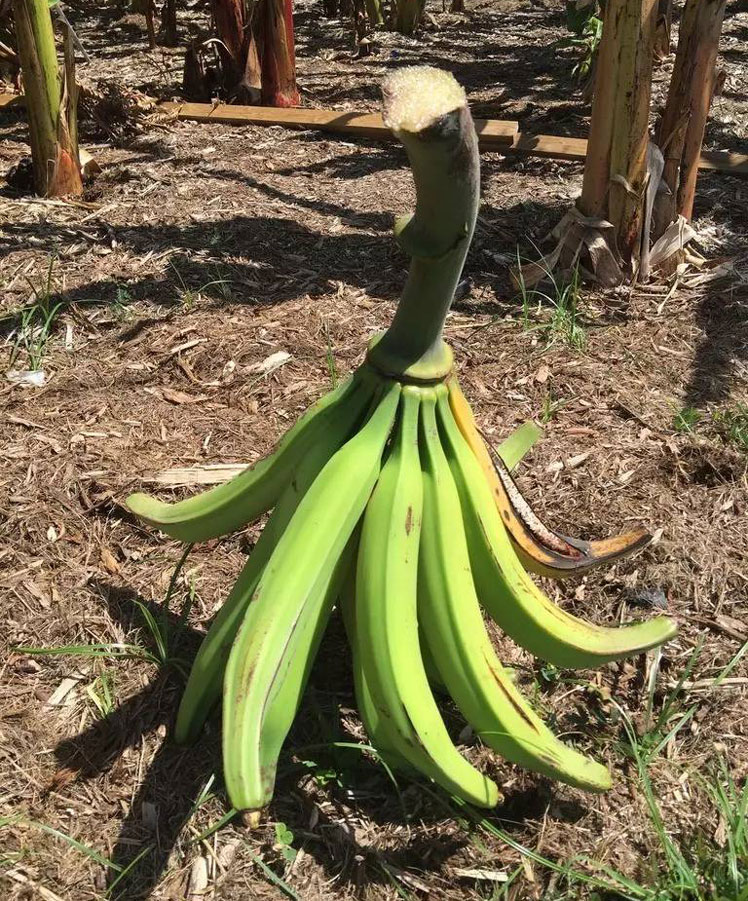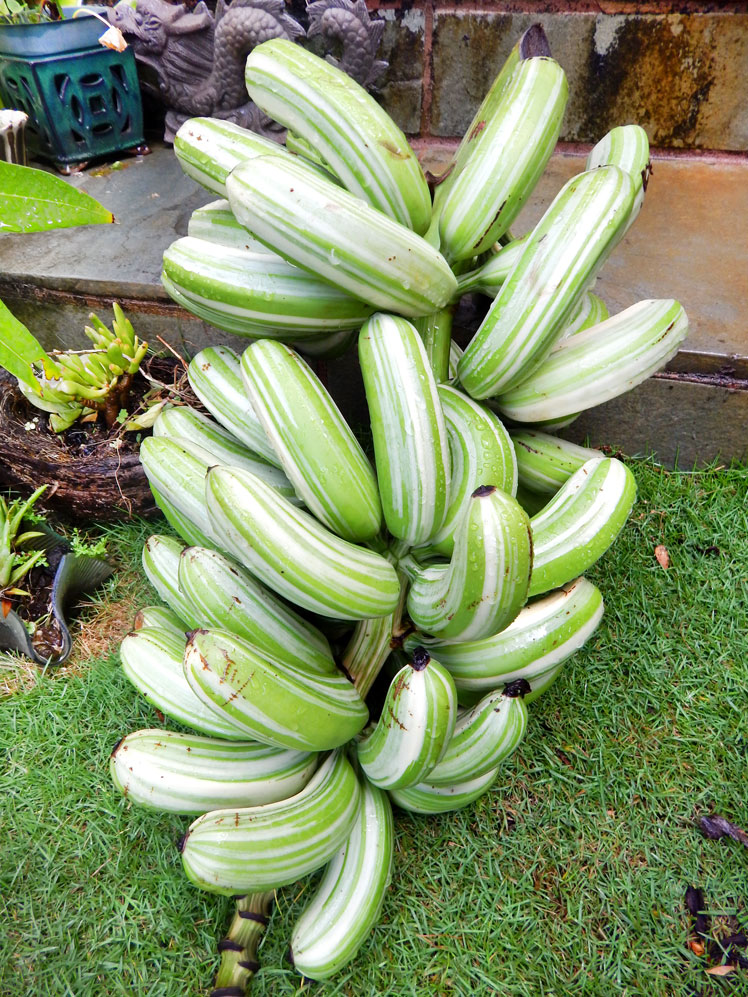Bananas come in many different varieties, and one of the lesser-known types is the red banana. These bananas have a vibrant, reddish-purple skin that sets them apart from the more commonly-seen yellow bananas.
While their appearance may be different, red bananas are still delicious and nutritious. They’re slightly sweeter than other types of bananas and have a creamy texture that’s great for smoothies or baking. They’re also a good source of fiber, vitamin C, and potassium, making them a healthy snack option.
If you’re looking to switch up your banana game, give red bananas a try! They may not be as easy to find as their yellow counterparts, but they’re worth seeking out for their unique flavor and eye-catching color.

Red bananas are a type of banana that have a reddish-purple skin and are widely popular. They are known by various names in English such as red banana, red Dacca, Claret banana, Cuban Red Cavendish banana, and Jamaican red banana. In fact, they have around 25 different names in different countries. These bananas are sold worldwide but are particularly popular in East Africa, Asia, South America, the United Arab Emirates, and Central America. Additionally, there are pink bananas available as well.

The Velvet banana, commonly referred to as the pink banana due to its stunning pink color, is a decorative variant of the typical banana plant. Its scientific name is Musa velutina, and it originally hails from the Indian state of Assam and the eastern Himalayan region of Nepal.
Primarily grown for its aesthetic appeal, the pink banana is an ideal addition to any garden or indoor plant collection. While it can be cultivated outdoors during warmer seasons, it should be moved indoors when the weather turns cold. This compact plant typically grows no taller than 1.5 meters.
In addition to the pink banana, there exists another banana type known as the green banana.

Did you know that there are some banana varieties which have green peels even when they are ripe? These types of bananas are generally larger in size and cannot be eaten raw as they are not palatable. Instead, they are commonly used to make banana chips or can be boiled, baked, or fried. Interestingly, some aboriginal communities don’t sell them in fruit shops but rather alongside vegetables like cabbage and potatoes. Another type of banana is the dwarf banana, which is smaller in size and usually sweeter compared to the larger green-peeled varieties.

The Senorita banana is a delightful example of dwarf banana varieties that goes by various names, such as Monkoy, Cariñosa, and Cuarenta Dias. These small but thick bananas boast a remarkably sweet flavor.
Measuring just 2.44 meters in height, the Senorita banana is one of the shortest types of bananas available. Its small fruit measures 85mm in length and 34mm in width. There are also giant varieties of bananas available.

Have you heard of the Rhino Horn banana? This type of banana is a unique hybrid variety that originated in Africa. What makes it stand out is its impressive length, making it the longest among all banana varieties. The plants themselves can reach a height of 3.6 to 6 meters. It’s definitely worth trying this exotic fruit if you ever have the chance! Another fun fact is that there are also striped varieties of bananas available – how cool is that?

Have you heard of the unique and uncommon Musa Ae Ae or Maia Manini banana? This particular variety stands out due to its distinct striped coloring, making it a rare find. However, due to its finicky growing habits, this plant is not commonly seen. The Musa Ae Ae can reach an impressive height of 5.5 meters and boasts foliage that is both colorful and eye-catching, with hues of green and white, and occasionally touches of pink around the edges. These wild bananas are truly one-of-a-kind!

Wild bananas may look similar to cultivated ones, but they do have one key difference: seeds in the fruit pulp. This sets them apart from the yellow bananas commonly found in supermarkets.

The subject that we will be discussing in this article may not come as a surprise to you at all – it’s about bananas. We specifically want to shine a spotlight on the yellow bananas that we see so often. One of the most well-known types is the Cavendish variety, which dominates almost half of the world’s production of dessert bananas and plays a major role in global trade. It’s easy to understand why this is the case since Cavendish bananas have a great flavor, are durable during storage and transport, and have a high resistance against diseases.

